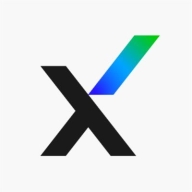

Trellix Endpoint Detection and Response (EDR) and Trend Vision One compete in the cybersecurity market, offering solutions for endpoint and network security. Trend Vision One appears to have the upper hand due to its comprehensive capabilities and centralized platform that extends beyond endpoint protection.
Features: Trellix EDR provides scalable solutions with antivirus and data loss prevention (DLP) capabilities, alongside automated threat hunting through guided analytics without requiring human intervention. Its combined EDR and antivirus approach is integrated within IT frameworks. Trend Vision One excels in advanced threat management and offers extensive network and cloud coverage, integrating effectively with third-party tools for comprehensive risk management.
Room for Improvement: Trellix EDR users have reported issues with platform integration and resource optimization, specifically mentioning high CPU usage and support system inefficiency. Enhancements in support and dashboard usability are needed. Trend Vision One could improve in streamlining integration and deployment in complex environments, as well as enhancing automation and handling complex attack vectors.
Ease of Deployment and Customer Service: Trellix EDR supports on-premises and hybrid environments, but user experiences with customer service vary, with some noting the need for better responsiveness. Trend Vision One is praised for its flexible deployment across on-premises and public clouds, with generally positive feedback on customer service, though there's room for improved technical guidance and support consistency.
Pricing and ROI: Trellix EDR is seen as reasonably priced with competitive licensing, providing adequate ROI through effective operations and compliance support. Some users find it costly compared to alternatives. Trend Vision One’s pricing is considered average and valuable, with newer pricing models, like credit systems, adding complexity. Both solutions offer good value, but differences in pricing structure simplicity affect user perception and affordability.
Our company went through a ransomware event, and if Trend Vision One had not stopped it, that could've closed the company's doors.
Trend Vision One has improved our ROI by 30 percent.
Thankfully, we also had cyber security insurance, and the insurance covered the incidents because, through Trend Micro and the implementation of the solution, along with the data it provided, we were able to demonstrate what had happened.
I have contracted support and also have an operating control so I can get various types of support.
It's not just about high-level support with the chatbot; rather, when an issue occurs, we have the experts on-site and ready to respond swiftly, which is crucial.
Trend Micro supported us throughout the transition from on-prem servers or other vendors, providing top-notch service at all times.
Support responds quickly, and together we’ve been able to solve all challenges in our day-to-day operations.
I’d give scalability a 10 because nearly everything is integrated.
Our growth over the past three years has never caused performance or expansion issues.
I don't think I've encountered any issues with scalability; we're growing steadily, and I believe Trend Vision One can keep up with our demand.
Trend Vision One works exactly as intended and has never hindered our operations, feeling more a collaborator than a roadblock.
The stability is very high.
Stability is critically important for us with Trend Vision One; it is very stable, providing continuous 24/7 support.
I am seeing, for workflows, some sort of ethical hacking to test our environment.
Trend Vision One does not initially disclose to customers that they need to purchase additional licenses and pay more for integrations.
Consolidating case details into a single, more intuitive view would streamline investigations and save time.
The deployment can be complex, and we'd like an easier process, especially when integrating with on-prem and cloud environments.
I find the credit model non-transparent—you can't always tell how many licenses apply to which product.
I have seen others that are double or triple the price.
Customers who cannot afford CrowdStrike's pricing can easily opt for Trend Vision One.
I have spent efforts on training our managers and others - what can software do if the knowledge base is low?
The most important features of Vision One include visibility, AI integration, attack pattern analysis, predictive analytics, and centralized visibility and management across protection layers.
The most critical feature of Vision One is that it gives us a single console for threat management.
Its ability to identify unmonitored endpoints and perform log inspection, which establishes operational baselines and detects anomalies, proves invaluable for threat identification.
| Product | Market Share (%) |
|---|---|
| Trend Vision One | 2.4% |
| Trellix Endpoint Detection and Response (EDR) | 1.2% |
| Other | 96.4% |


| Company Size | Count |
|---|---|
| Small Business | 11 |
| Midsize Enterprise | 3 |
| Large Enterprise | 9 |
| Company Size | Count |
|---|---|
| Small Business | 41 |
| Midsize Enterprise | 11 |
| Large Enterprise | 34 |
Reduce the time to detect and respond to threats. Trellix EDR helps security analysts quickly prioritize threats and minimize potential disruption.
Guided investigation automatically asks and answers questions while gathering, summarizing, and visualizing evidence from multiple sources—reducing the need for more SOC resources.
Cloud-based deployment and analytics enables your skilled security analysts to focus on strategic defense, instead of tool maintenance. Benefit from implementing the right solution for you.
Trend Vision One offers comprehensive protection for endpoints, networks, and email with centralized visibility. It is valued for its attack surface management, real-time threat detection, integrated management, ease of deployment, and user-friendly interface.
Trend Vision One provides a sophisticated security platform combining endpoint, network, and email protection with features like virtual patching and advanced AI capabilities. Its centralized management and integration with platforms like Office 365 and Azure make it an attractive option for organizations needing streamlined workflows and efficient risk management. While it boasts robust integrations and ease of use, enhancements are needed in reporting, tool integration, and reducing false positives. Users call for better support infrastructure, faster response times, and improved threat intelligence capabilities. Despite some complexity, its AI and ML features significantly enhance threat detection and response.
What Features Define Trend Vision One?
What Benefits Should Users Look For?
Trend Vision One is implemented in industries that require endpoint protection, ransomware defense, and incident response, being flexible for both on-premises and cloud environments. It is used to monitor servers, networks, and endpoints, providing features like email protection, behavioral detection, and threat visibility. Organizations benefit from AI and ML, improving their security posture and response capabilities.
We monitor all Endpoint Detection and Response (EDR) reviews to prevent fraudulent reviews and keep review quality high. We do not post reviews by company employees or direct competitors. We validate each review for authenticity via cross-reference with LinkedIn, and personal follow-up with the reviewer when necessary.